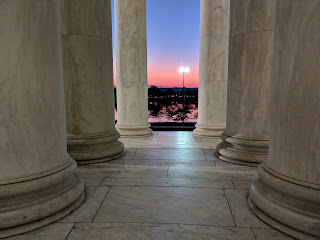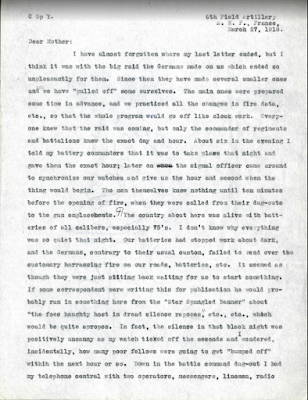 |
Jason McVay Austin (1886-1966) at
Culver Military Academy |
 |
Raymond Brooks Austin (1889-Oct 6, 1918)
Culver Military Academy, 1908
|
Imagine that your father was the Dean of Women in the Gilded Age, and you were one of three boys raised in the Women's College, surrounded by pioneering college-educating women. Your mother was herself a college graduate and staunch advocate for women as witnessed by
her 1882 graduation speech on "Woman's Employment". But still, what must it have been like for three boys to be raised in a woman's dorm, with your father (and mother) in charge? This was the world that Jason, Cyrus, and Raymond Austin were born and raised in. Until high school, that is. What must it have been like?
My maternal Grandmother Crow, who went to this same college, used to chuckle at the ways she and her classmates would push the limits after hours until Dean Cyrus Brooks Austin (1851-1924) came paddling down the hall at night in his slippers to reprimand them. They had a nickname for him, based on the sound his slippers made coming patiently, night after night, to keep the peace. It would be a different topic to share the photos of my maternal Grandmother at
Monnett Hall at Ohio Wesleyan University (OWU), trying out new things as she also mastered the Latin and German she herself went on to teach. This is the same Grandmother who remarked to me that she went to college on a horse and buggy and lived to watch a man walk on the Moon. Sometimes life is long.
Because of the Austin boys' upbringing in a Women's College Residence (and likely other reasons) for their High School years the boys went away to Marshall County Indiana, to the Culver Military Academy, founded in 1894. After that, they each returned and graduated from Ohio Wesleyan before each serving in the Artillery in the First World War. This Saturday October 6, 2018 marks the centennial of Raymond Austin being killed in combat in France, and I feel compelled to find and share stories with the generations who have gone on.
I start with this light-hearted story about where to go to high school, because the benefits and failings of private vs. public school resonates in our family, filled as it is with educators. (Did you know my dad's Grandfather Austin - the Dean of Women - was a Math Professor at Ohio Wesleyan, and his mother's Grandfather Fay was also a Math Professor -- for 36 years at the Naval Academy in both Newport (1861-1865) and mostly Annapolis.)
A generation later my dad, Jason Jr., was sent away to Boarding School for high school for various reasons, and he so strongly disliked the experience that no matter how much I, a generation later, pleaded to leave my public school, my dad refused. This was based in large part on money, but also because of his unshakable visceral dislike of private schools. In dramatic contrast, my dad's brother, Marshall, was sent away to board at the exact same high school and loved it so much that Marshall insisted all of his own daughters go away to Boarding School - no matter how much these girls of yet another generation apparently disliked it. Only my Uncle Marshall's fifth girl, Katherine Austin, found the way to graduate from a public high school - and I welcome her sharing her sense of this family crossroad. It feels like a pendulum. I so disliked my own public school experience that I went out of my way to be sure my own children could have a private school experience, even if, in the end, we got the best of both by moving between the two different environments. Now I look back on those years and reflect on all that is needed to build an adult. The truth is: so much transcends the issue of where to go to High School.
So: what did a
Culver Military Academy experience mean for Jason, Raymond, and Cyrus? Were they intending to become career military officer? (Raymond enlisted in 1912 after graduating from OWU in 1911.) Who could tell that World War One would come along to test them in ways this military high school prepared them for in unexpected ways? Someone would have to do more digging in archives to find the raw material to tell this story more fully. I'd be curious! (Still thinking about all the Marshalls... did you know the Culver boys of 1912 Marshall County wanted to march in DC for the inauguration of President Wilson and Vice President Marshall?)
Meanwhile, Culver shaped the Austin boys into different men. Jason came back and married the daughter of a career military officer, Charles Augustus Doyen. During 1916, Jason and Raymond Austin were both in the Field Artillery and stationed in the Philippines. There, Doyen's daughter gave birth to Jason Jr., and the families were all together. For awhile. The United States entered WWI on April 6, 1917 and on November 1917 Major Raymond Austin sailed to France with the First Division - never to return. Doyen commanded the 5th Regiment of the US Marine Corp when it was organized June 7, 1917; the Marines sailed for France a week later. On November 11, 1918 the Armistice ended the war to end all wars. Both Major Raymond Austin and Brigadier General Charles Doyen died before then, on Oct 6, 1918. Sometimes life is short. Let's spend some time this week at least, reflecting, remembering, telling the stories on to the next generations.
Stay tuned: tomorrow I interview again one of the military historians who has shared his research on General Doyen with me for almost five years now. The topic is Doyen and the Marines in WWI. Follow this blog for timely updates. Please share with your family, and add Comments.








































